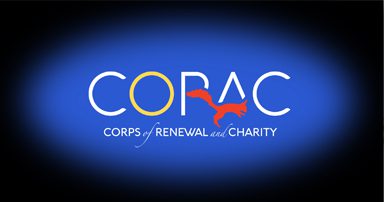To all those people in Canada, Ireland, Denmark, Australia and other countries that have spoken to me about getting their own versions of CORAC started, I hear you. I started last week thinking seriously about how to seed affiliates in those countries throughout the world that have people who are eager to work together to hold back the tide of chaos and stand with each other for faith, family, and freedom. Give me a couple of weeks, and I will have some stuff put together so you can get it going.
*********
In 2006 I was involved in two Congressional campaigns and spending more than a little time on Capitol Hill. The Democrats had decided that year to make support of the use of embryonic stem cells one of their major fault-lines in their attack on Republicans as being heartless folks who wanted people to die. I suspected their emphasis on this subject had more to do with coming up with a justification for ever more abortions than it did any concern for the sick. But the attack was working. Republicans were paralyzed when the attacks from the likes of Michael J. Fox were rolled out (I never blamed Fox: he was not a scientist, just a victim being exploited by the ghouls of the anti-God left. He suffers a neurological disease and just wanted help). Frankly, Republicans were floundering on the subject.
I decided to do some deep-dive research on the subject. As I mentioned a week or so ago, there are a handful of occasions where my work has been the catalyst for changing important national policy priorities. In this case, I needed to know about the difference in the efficacy of adult stem cells versus embryonic stem cells. I needed to gather the information in a concise way that would give sufficient background to Republican officials and candidates so they could vigorously respond to any challenge – and give them a conclusion that was vividly stated, easily understood and utterly compelling. If possible, I wanted the argument to be made on pragmatic grounds. I always prefer to make arguments on pragmatic grounds: if done properly, they are irrefutable by anyone, whereas moral arguments can easily be rejected by any who don’t share your morality. I like to force unconditional surrender when I can. But I was prepared to make a concise, compelling moral argument if the facts were not strong enough to make the pragmatic case irrefutably.
Normally, when I do such a deep-dive, one of the rules I go by is to keep it confidential. As is often said, success has many fathers while failure is an orphan. I NEVER want my ego to get in the way of accomplishing good policy. In this case, that rule was abrogated when the memo I sent was widely circulated in the halls of Congress, first among Republicans, and then Democrats with my name on it. My clients and friends were so gleeful at it that they breached the authorship, so it became moot.
The memo had spectacular success. First, I discovered that emphasizing embryonic stem cells was a formula for leaving more people to suffer and die. It was exactly the opposite of what Democrats were saying. And it was utterly compelling. Within weeks after the memo started circulating, the Democrats put the issue to the back burner – where it has stayed ever since. I even had one woman, who self-described as “pro-choice,” who sat on the board of directors of a research hospital call me. Her Congressman had given her the memo to get her take on it – and she was so delighted with it she asked him to get my phone number so she could call. She said she had been distraught – that embryonic stem cells were the “sexy” new thing. She said her hospital raised money off of it, but they all knew the only real hope was with adult stem cells, which is where all the successes were coming. But they had to devote a certain amount of resources to the “dry hole” of embryonic stem cells to satisfy their donors – which took resources away from the research that actually worked. She wanted my permission to use this memo as the basis for their own literature because it “so powerfully and concisely laid it all out,” but without using my name, because I did not have credentials in the subject. I, of course, was happy to agree.
Now, for some of the basic rules I use when beginning a deep-dive:
- Rigorously follow the evidence where it leads. Put your advocate hat aside. If you are going to gain credibility with key decision makers, it helps enormously that you have an established reputation for letting the chips fall where they may when developing such a document. There are a few occasions when my research has led me to conclude I was mistaken in my initial assessment. On the rare occasion that has happened, I abandon the project or make the case from a different ground (usually moral) while candidly conceding the practical problems.
- Do not use “iffy” evidence. On any contentious subject, all sorts of rumors and myths arise on every side – and advocates treat these rumors and myths as if they were hard evidence. I consider them weeds you must get through to make a compelling case – and I am ruthless about pulling all the weeds out of my hard research. In this case, the “weeds” your opponents put out are easily refuted, but the temptation to be seduced by your own side’s “weeds” is very seductive. If you succumb, your objective usefulness is destroyed.
- Challenge your own conclusions. When you get deeply into any discipline, a sort of internal logic emerges that helps you along. It is a fool’s trap, once you have discovered this internal logic, to decide you are now an expert. Almost every discipline also has certain tenets that are counter-intuitive, particularly to a layman. If you just go by the internal logic, you will easily miss or misunderstand these counter-intuitive points – and that can lead to catastrophic error.
- Get your conclusions vetted by serious, credentialed experts after you have finished. In the case of this memo, I vetted the final draft with a prominent canon lawyer, a prominent Constitutional lawyer, and a microbiologist from a southwestern university who had published several major articles on the subject. The canon lawyer was intrigued by my question on when conception actually occurs, but found nothing contrary to Christian faith and morals in the memo, including the hard questions. The Constitutional lawyer was intrigued by the hodge-podge of laws relating to ownership in frozen embryos and discussed with me how that might ultimately be resolved, but gave me the go-ahead. It was the microbiologist who was fascinating, and ultimately flattering. She made the only suggested change: she told me I should use the phrase, “effective” or “promising” therapies, where I had originally written, “cures.” She then asked me where I taught. When I told her I neither taught nor had any background in microbiology, she thought I was perpetrating some silly joke on her (that was the flattering part). When I assured her I was not kidding, but was just a competent and detailed researcher, she told me that she wished her graduate students all had as clear a grasp on the essentials as I did. I don’t think I quite convinced her I was not some sort of incognito microbiologist.
- Keep matters entirely confidential so your clients and friends have maximum options. Again, in this case, my clients and friends, themselves, vitiated this requirement. I am glad of it, for it gives me the opportunity to show you what you can do with tight discipline, detailed research, and taking counsel from top professionals. My main contribution was to put the material in a form that was easily digested, easily conveyed, and irrefutable.
Keep in mind that this was written in 2006 – and based on the law at that time. And now, for the memo:
Confidential Memo on Embryonic Stem Cell Research
(Final Version)
From: Charlie Johnston
To: Clients and Friends
Date: July 26, 2006
The Democrats are convinced they have found a significant Achilles Heel on our approach to stem cell research. If we do not properly frame this issue, they may be right. More importantly, if we do not frame it properly now it is going to be a heavy-pressure issue for years to come and could become, particularly for pro-lifers, the same sort of setback that advocacy of partial-birth abortion was for pro-abortion activists.
The facts are on our side. In fact, devoting resources to embryonic stem-cell research (ESC) at this period of development would be a set-back rather than an advance in finding cures for debilitating diseases. The reason is that it directs resources away from adult stem-cell research (ASC) which is already responsible for over 70 promising human therapies. But explaining this certainly does not pack the power of “You cruel Republicans are denying me a cure.” The answer is in first framing the issue properly and then having sufficient background knowledge to stand examination. I am pro-life and opposed to embryonic stem-cell research, but I think we are making a serious mistake by framing this issue primarily around the moral issue first and the practical issue second. The practical issue is compelling – and that is where we should lead from. Though Americans are largely secularized, we are still fundamentally a compassionate people. If we continue to lead from the moral argument, it undermines our claim to morality among secularized Americans, as it makes us seem to condemn suffering people to death in defense of a principle involving an embryo. Pro-abortion advocates insistence that the principle of a “right-to-choose” trumped the agonizing execution of what was visibly a real baby in the partial-birth abortion debate changed the landscape a decade ago – to our advantage and their disadvantage. This time, as then, we have the better of the argument, but we have to be a lot more sophisticated and disciplined in making our case.
Following is a brief overview of the relevant issues involved, followed by (in italics) a suggested policy statement:
The song of the siren for ESC is what is called the cells’ pluripotency – that is, their potential to become any sort of human tissue. It is what has fired the imaginations of many health advocacy groups and some scientists. Certainly one can understand their enthusiasm in the abstract. But they are not letting a lot of very cold, hard facts get in the way of their hope and, in the process, are doing a lot of damage to people who really do need help.
First, the cold hard facts:
- Typically, scientific protocols require positive evidence of promise from animal studies before beginning human experimentation. We have engaged in unrestricted research on animal embryos for a quarter of a century now – with no progress in treating animal or human disease. Advocates of human ESC are not demanding that we follow the science, but that we make an exception to standard scientific protocols to pursue what is almost certainly a chimerical hope.
- The first major problem with ESC is immunology. The body rejects what it identifies as foreign. Unless that problem can be overcome ESCs offer no hope. At best, they could buy time, not a cure. And in the case of cells that are seamlessly integrated into the body’s structure, when rejection comes, how do you separate the tissues that are foreign from those that are not? In this case, rejection would not be a problem to be managed – as in certain organ transplants; it would be a death sentence. ESC research advocates suggest that problem can be surmounted by either using nuclear transfer (NT) technology (cloning) or by having large banks of stem cells typed similar to blood stocks. Cloned animals, using perfectly normal, naturally produced genetic materials, almost invariably produce sickly, abnormal copies. Not terribly reassuring. Typing stem cells would not solve the immunology problem, but simply delay the onset of rejection. But both arguments are irrelevant until the second problem is resolved.
- The second problem – probably the insurmountable one – is embryology. You can’t just put an embryo into a test-tube and watch it turn into a baby. Tumors have stem cells that can turn into almost any type of tissue, but they have no blueprint. Perhaps surprisingly, an embryo in an artificial environment loses its blueprint. It turns out that complex environmental factors are required to properly cue the development of a baby from an embryo. That is, the positioning of the embryonic cells in relation to their embryonic neighbors, electrical fields generated by the mother’s body, mechanical tensions in the womb, and even the positioning and electrical fields associated with the mother’s organs. There are a host of non-molecular or complex structural factors that must be perfectly choreographed for embryos to develop normally with normal tissues. Remember, scientists have been working for 25 years with animal embryos and have made NO significant progress with these non-molecular and structural hurdles.
- The aggressive pluripotency of ESCs is both the source of their promise and, perhaps, the characteristic that must make them ever a siren – luring good men to them only to dash their hopes and careers. While ESCs can become anything, they can’t become anything in particular until they have gone through the complex choreography discussed in item three. But they can be very aggressive about becoming a little bit of everything. If you went to the hospital for a kidney transplant and instead got a mélange of bone, heart, and eye cells that could not function as a kidney but would grow explosively, you would know that was not good medicine. ESCs are far more likely to produce monstrously aggressive undifferentiated tumors than they are to produce normal tissue outside of their natural environment.
- ASCs completely bypass the immunology problem. Further, they bypass the most difficult early hurdles of the embryological problem. They are differentiated by this time. They usually don’t multiply as quickly as ESCs (though some recently isolated ASCs come very close), but they also are much less likely to become tumerous. They might not be able to become just anything, but they can become a normal tissue of the specific thing a patient needs. Some publications have said that ASCs have accounted for 78 promising findings for the treatment of human disease thus far and others have said only 72. What is undeniable is that at least 70 promising therapeutic approaches have been developed through ASCs with only about 10 years of research, whereas 0 – ZERO – effective therapies have been developed through ESCs. And zero effective animal therapies have been developed through animal ESCs despite 25 years of research.
- Finally, one more note to help understand how huge the hurdles are to ESCs…if the incredible hurdles were surmounted, one still has the problem that at early and even intermediate stages, normal tissue is almost indistinguishable from abnormal tissue. The transplant of ESC-developed tissue would be like a perverse fixed lottery. In state lotteries, there are millions of tickets and only one winner. In this lottery, one would be injected with millions of cells – and if any one of them is abnormal, it would taint all the rest of the normal cells. I would love a lottery in which, if anyone won a million dollars, everyone who held a ticket would also win a million. That is the sort of lottery that ESCs offer even IF they solved the first hurdles, but instead of winning a million dollars, you would win a murderously aggressive tumor.
Now to pop a few myths:
- No one is banning ESC research. What President Bush’s veto did was limit the federal funding that can go to it. If Donald Trump or Bill Gates or Ted Turner want to devote their fortunes to ESC research, there is no law that would stop them. There are substantial private dollars going to ASC research because it has provided useful results. There are almost no private dollars going to ESC research because, after a quarter century of unregulated animal research we have not been able to even cure a single disease in a mouse with them. We have given some mice some monstrously aggressive and fatal tumors, though.
- The President has not even banned all federal research on ESCs. It is simply limited to 600 existing lines of embryonic cultures. Far fewer are actually in use, though experts dispute how many precisely are actually being used.
- Embryos are not simply going to be thrown away. In the case of extra embryos created for the purpose of in vitro fertilization, the male and female donors have, at least, property rights to them. They decide whether their embryos will be frozen to be used later, donated to other couples, discarded, or donated for research purposes. The period in which embryos must be preserved varies throughout the world from between perpetuity down to five or 10 years. There is currently no federal statute defining the status of embryos, but a patchwork of state laws. Some research hospitals complain that, in the case of in vitro embryos, even though they can technically discard them after five years, if they don’t get instructions from both donors allowing them to do so, there is nothing to prevent those donors from coming back and suing them. So the problem seems not to be discarded embryos, but an excess in storage even after they have become degraded.
- Advocates of unrestrained federal funding of ESC research claim opponents aren’t following the science. It is exactly the opposite. After 25 years of fruitless animal trials, advocates are arguing we should completely bypass that protocol and begin human experimentation.
Now a few long-term thoughts:
- The hope of advocates for ESC is understandable, even if overblown. Though many abortion advocates cynically use it as a stalking horse for their issue, one should not dismiss the sincere hope of many scientists and the desperation of many patients. But don’t forget, either, that a few decades ago certain unscrupulous people were peddling extracts from apricot pits as a miracle cure for cancer – and preying on terminally ill peoples’ desperation to strip them of everything they had. In the course of the very fruitful research into ASCs, some breakthrough may come which clears some of the hurdles to the usefulness of ESCs. I don’t consider it likely. The problems inherent here are probably a million times more complex than the problems were in sending a man to the moon. But human ingenuity has often surmounted seemingly insurmountable problems. (On the other hand, the scientific community is pretty much silent when one of its much-touted promises turns out to be a bust; witness gene therapy). If the research with ASCs produces a breakthrough that makes ESCs viable, the issue will certainly be revisited.
- The moral issue for those who, like me, believe life begins at conception, is more complicated than it first appears. In the first place, does conception occur at fertilization or at implantation of the fertilized egg? I know many evangelical Protestant Churches tacitly assume it is at the moment of fertilization. The Catholic Church opposes in vitro fertilization, but has not established defined (mandatory) doctrine condemning it – or establishing when conception has occurred. This is an important long-term question, because if the answer is at fertilization, pro-lifers open themselves up to several trick bags. The first is that no fertilized egg has yet developed into a baby outside the womb. Such an embryo, to this point, can only develop into the muddled clump of tissue that pro-abortion advocates claimed 30 years ago that every fetus was. The second is that many fertilized eggs never implant and are naturally expelled from a woman’s body. This is the more ominous theological problem. If conception were defined as the moment of fertilization, opponents of pro-lifers could argue (with some merit) that if that is the case, even God treats human life cheaply. I don’t know what the answer is here, but I want us to know all the potential consequences of what we are dealing with.
This summarizes what an official must know before making a defensible case on the issue. Following, then, is what I recommend as a sample positions statement on Stem Cell Research.
Proposed Statement
I strongly support scientific research that can cure disease and alleviate human suffering. That is why I am a vigorous advocate of federal funding of stem cell research – adult stem cell research. In the decade that serious research has been done on adult stem cells, over 70 promising approaches to human disease have been developed and used. Real people with real illnesses are being helped right now by the noble work our doctors and scientists have been doing with adult stem cells.
Yet for many of the same reasons, I am opposed to additional federal funding for embryonic stem cell research. Let me explain…not a single useful human therapy has been developed through embryonic stem cell research, not one. Standard scientific protocols call for successful animal research before beginning human experimentation. Did you know that scientists have been engaged in unrestricted animal embryonic stem cell research for a quarter of a century now? And not a single breakthrough; not a bit of hope. So now advocates of embryonic stem cell research want us to ignore the science and, having failed at the animal trials, move directly into human experimentation? That’s not good science, it’s not good public policy, and it moves dollars that could be devoted to finding cures into research that has been nothing but a dead end for a quarter of a century.
Understand, I’m not opposing private research, which is allowed by current law. If either Ted Turner or Bill Gates want to devote their substantial private fortunes to embryonic stem cell research, there is no law preventing them – and I will not propose any such law. But I will not vote to devote scarce tax dollars to what has shown no promise when real people need real cures. We are at the very early stages of serious research with adult stem cells – and are making real progress and developing real therapies every month. If we stay the course, we have real hope of curing chronic diseases and repairing neurological injuries.
I don’t fault the advocates of embryonic stem cell research for their hope. They are sincere. But there are some serious problems that their yearning leads them to avoid. People’s immune systems attack foreign tissue, including tissues developed by stem cells taken from someone else’s body. Thus far, embryonic stem cells have not been able to develop into normal tissue outside the womb – all they can develop into are monstrous tumors of various types of tissue. It is not a matter of getting the right recipe – it must also be in the right physical environment with the right physical cues. So far the only such environment, in man or animals, is the mother’s womb and the body of the developing embryo itself.
So no, I will not vote to devote more federal funds to research that, in 25 years, has not even been able to cure a mouse (though it has succeeded in implanting fatally monstrous tumors in quite a few mice). But I will continue to advocate for funding for adult stem cell research. I believe we are on the verge of finding real relief for many who suffer – and I won’t be distracted from my commitment to that cause by the siren song of a therapy that has been born aloft by nothing but high hopes while producing no results.
With the background information I have provided here, you should be able to respond to any questions quickly and intelligently if you make this, or some version, of this statement.
*********
Truth will stand the test of examination. If you want to make a compelling case, the first step is to cast off your partisan hat while you work and submit yourself to the test of examination. It is hard, it is demanding, and it is humbling – but you can change the world by doing it. The old world is collapsing around us. Let us dedicate ourselves with real vigor to making truth and evidence our standard in the new one that rises from the ashes of the old, remembering that God is Truth – but that our capacity to understand Him is limited, particularly when we let our passions be our guide. Let us resolve to follow Him with our whole heart, mind, body and spirit.
Follow me at Gab by looking me up at Charliej373 or at the CORAC group.
*********
We are in the first week of our fall fundraising campaign for CORAC. It has gotten off to a slow start, with just over $2000 donated this week, out of a projected goal of $50,000. If you can, won’t you send the largest donation you can today, so we can continue our work on health and wellness, sustainability, communications, prayer teams – and expanding into education and emergency preparedness as we connect people throughout the country?





















0 Comments